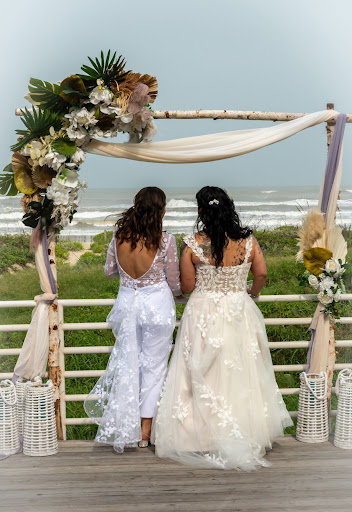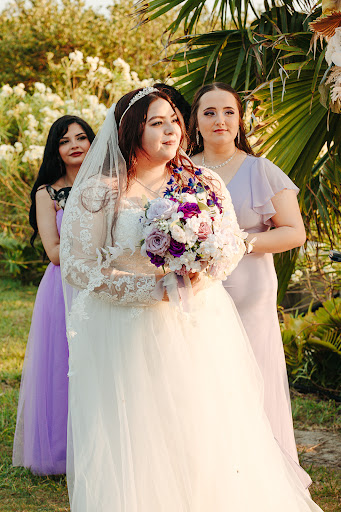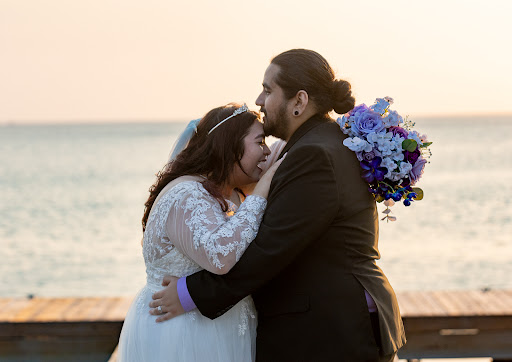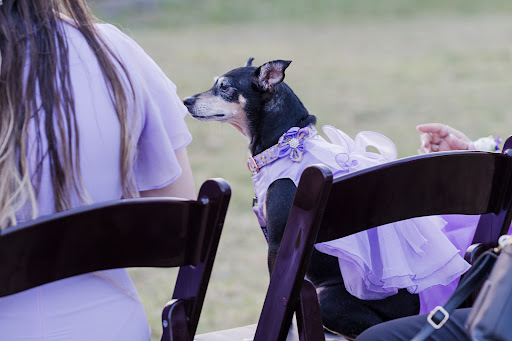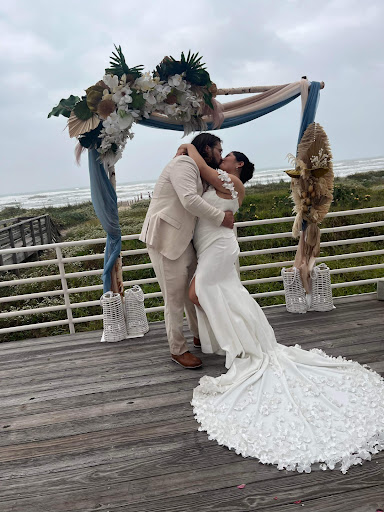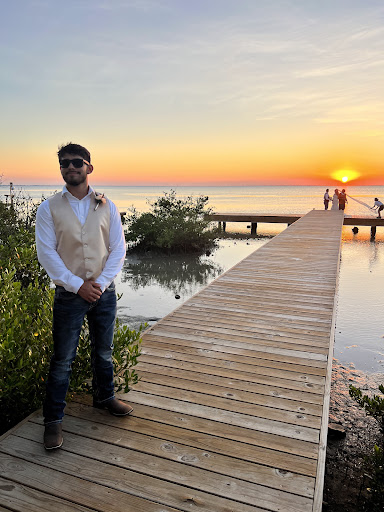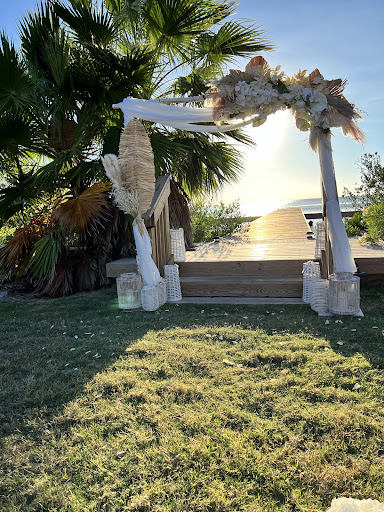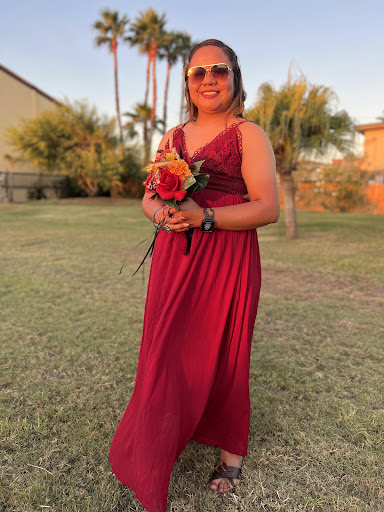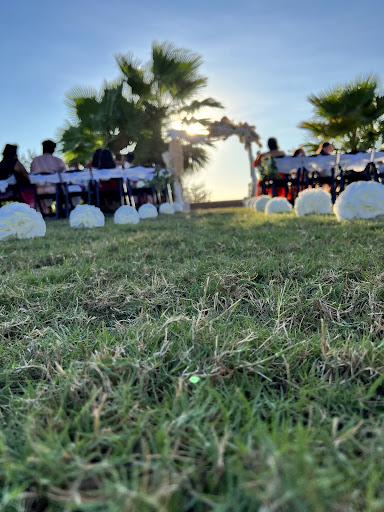Crafting the Perfect Wedding Day Timeline
By Weddings By Wendi – Your San Marcos, Texas wedding planning partner
How to Craft the Perfect Wedding Day Timeline: Step-by-Step Guide with Wedding Day Schedule Templates
A clear, well-constructed wedding day timeline is the backbone of any smooth celebration, translating your priorities into a sequence of timed actions that keep vendors, the wedding party, and guests aligned. In this guide, you will learn what a wedding day timeline includes, why it matters, how to build one step by step, and how to adapt templates for formats from traditional receptions to micro weddings and elopements. Couples often face stress from missed photos, vendor overlaps, or rushed receptions; a thoughtful itinerary reduces those risks and preserves time for the moments that matter most. This article maps practical timeline-building methods, vendor integration strategies, sample templates, and personalization tips with local considerations for Austin and the Texas Hill Country. Read on for actionable steps, downloadable-style tables, and checklist tools that let you create a wedding day schedule that protects your priorities and leaves room for joy.
What Is a Wedding Day Timeline and Why Is It Essential?
A wedding day timeline is a minute-by-minute itinerary that sequences every major event—getting ready, photos, travel, ceremony, cocktail hour, reception events, and exit—so each participant and vendor knows when to act. This structure works by aligning dependencies (for example, vendor setup before guest arrival) and creating buffer windows that absorb delays and protect key moments like portraits and the ceremony. The result is less stress, better vendor coordination, higher-quality photography, and an improved guest experience. Below are the core reasons every couple benefits from a timeline and how those benefits translate to on-day outcomes.
- Clear vendor handoffs ensure load-in and soundchecks occur without conflicts.
- Photography-optimized blocks protect golden-hour portraits and candid coverage.
- Buffer windows reduce cascading delays when a single element runs late.
- Delegated responsibilities keep the couple focused on the experience instead of logistics.
- Better guest flow and pacing improve overall reception energy.
These benefits make timeline creation a planning priority, and the next subsection breaks down the specific components you should include on your schedule.
What Does a Wedding Timeline Include?
A complete wedding timeline lists every phase of the day with time ranges, responsibilities, and location notes so participants understand where to be and when. Typical components include getting-ready windows, vendor load-in/setup, first-look and couple portraits, family photos, ceremony timing, cocktail hour, reception programming (dinner, toasts, first dance), and the grand exit. Each item should include a start time, estimated duration, and an assigned point of contact to prevent ambiguity. For example, a concise entry might read: “2:00–2:45 PM — Bride portraits (photographer lead / bridesmaid singer to manage veil) save the dates.”
To keep the schedule actionable, prioritize must-have moments and group related tasks into blocks; this reduces context switching and helps vendors plan setup and teardown. The next subsection explains how these components actively reduce stress on the wedding day.
How Does a Detailed Timeline Reduce Wedding Day Stress?
A detailed timeline reduces stress by replacing uncertainty with predictable sequencing and contingency planning, giving the couple and vendors a shared operating plan they can follow. When responsibilities are assigned and buffers are included, small delays become manageable rather than cascading crises; for example, a 15-minute cushion before the ceremony can absorb late hair-and-makeup finishes without impacting photos. Coordinators and designated point people can triage problems quickly because the timeline clarifies who makes decisions and which tasks can be compressed.
Effective timelines also support emotional calm: when the couple knows the next scheduled moment, they can stay present rather than worrying about logistics. Understanding this mechanism prepares you to create a practical timeline, which is the focus of the step-by-step section that follows.
How Weddings By Wendi Ensures Seamless Timeline Management
Professional day-of coordination takes the timeline from document to reality by creating the schedule, communicating it to vendors and the wedding party, and managing on-the-day pacing so the couple stays focused on their experience. Weddings By Wendi offers day-of wedding coordination that includes detailed timeline creation and active on-site management, ensuring vendors are aligned and transitions occur smoothly. Using local venue knowledge and established vendor relationships, the team anticipates common timing challenges and implements buffers and handoffs so your day unfolds on schedule.
If you prefer a stress-free execution managed by professionals, Weddings By Wendi’s day-of wedding coordination ties planning to on-the-day action and helps preserve the most important moments; the next section outlines how to build a timeline step by step.
How Do You Create a Wedding Timeline Step by Step?
Creating a reliable wedding timeline follows a backward-planning approach that starts with a clear ceremony time and works back to allocate prep and vendor windows, while forward-checking for reception programming and vendor needs. This method works because it anchors the day around the event that typically cannot be moved, then sequences dependencies around that anchor to avoid conflicts and ensure portrait time. The following numbered steps show an efficient HowTo process with time estimates and decision points for each major phase.
- Establish the ceremony or event anchor and venue constraints, then confirm vendor curfews.
- Work backward for getting-ready windows, portrait blocks, and travel times, adding 15–30 minute buffers.
- Allocate vendor setup/load-in windows and schedule soundchecks and lighting checks before guest arrival.
- Create a vendor-and-bridal-party distribution of the timeline plus an executive day-of version for the coordinator.
- Rehearse critical transitions at the rehearsal or walkthrough and finalize contingency rules.
These steps form the backbone of a timeline-building workflow that reduces surprises and improves pacing; the next subsection breaks the day into its key phases.
What Are the Key Phases to Include in Your Wedding Day Schedule?
Break the day into five main phases—pre-ceremony, ceremony, post-ceremony photos, cocktail hour, and reception—assigning typical durations and core tasks for each so responsibilities are clear. Pre-ceremony covers getting ready and hair/makeup (often 2–4 hours total depending on party size); the ceremony typically runs 20–45 minutes; post-ceremony photos and family portraits often occupy 45–90 minutes; cocktail hour is usually 45–60 minutes and doubles as a photography window; reception programming varies from 2–4+ hours. Defining these blocks ensures photographers, caterers, and the DJ know when to be ready.
Recognize dependencies—portraits often occur during cocktail hour or before the ceremony—and sequence tasks so vendors are not competing for the same space. With that structure in place, the bridal timeline checklist is the next practical tool.
How to Build a Bridal Timeline Checklist for Your Wedding Day
A bridal timeline checklist narrows the couple-focused tasks into a succinct sequence—hair/makeup windows, dress dressing, vendor touch-ups, and portrait windows—so the wedding party can follow a clear rhythm. For example, start hair and makeup three to four hours before the ceremony for a party of six, schedule the bride’s final touch-up 30–45 minutes before departure, and allocate 30–45 minutes for bride portraits. Include notes for outfit changes, emergency kit responsibilities, and transportation calls.
Having a printable checklist for the bridal party minimizes last-minute confusion and keeps photo blocks on time; the following subsection lists tools and templates that help you assemble and share these schedules.
What Tools and Templates Help You Craft Your Timeline?
Several practical tools streamline timeline creation and sharing: a Google Sheets master schedule for live edits, a PDF one-page timeline for vendors, and timeline-builder apps for visual sequencing. Google Sheets excels for collaborative editing and version control, while a compact PDF (“vendor exec”) provides a quick reference for on-site teams. Timeline-builder apps add visual clarity when mapping locations and transport windows, but a simple spreadsheet plus a one-page vendor PDF is often the most reliable.
Coordinators use these formats to provide both an overview and actionable copies for vendors and bridal parties, and if you want professional timeline creation and day-of management, Weddings By Wendi’s day-of coordination service can produce and manage these templates for your event.
What Are Typical Wedding Timeline Examples and Templates?
Seeing concrete timeline examples helps couples choose the right structure for their wedding format; below are adaptable templates for a traditional full-day wedding, a condensed micro wedding, and an elopement. Each template lists start times and key milestones to make copy-and-paste planning easier. After these examples, a comparative table contrasts formats so you can pick the one that best matches your priorities.
A standard traditional wedding example:
This traditional template emphasizes dedicated portrait time and a multi-hour reception; below is a summary that helps compare condensed formats.
What Does a Traditional Wedding Day Schedule Look Like?
A traditional schedule spaces portrait time before or during cocktail hour and reserves an extended reception window for dinner and dancing, supporting elaborate vendor setups and a multi-course timeline. By allocating dedicated blocks, photographers can capture formals and candid moments without shortening the reception. A typical traditional day includes a 60–90 minute portrait block, a 30–45 minute ceremony, a one-hour cocktail hour, and a 3–4 hour reception. These durations balance guest experience and vendor flow while leaving buffer space for delays.
This template serves as a copyable baseline; the next subsection explains how to compress the schedule for micro weddings and elopements.
How to Customize a Micro Wedding or Elopement Timeline?
Micro weddings and elopements condense the schedule by combining tasks and reducing vendor load to focus on the core ceremony and portraits, often fitting into a 2–4 hour window. Typical micro formats prioritize ceremony and couple portraits with shorter cocktail or reception segments; vendors are consolidated when possible to reduce travel and setup. For example, a 3-hour micro wedding might include one hour of getting ready, 30 minutes for portraits, a 20–30 minute ceremony, and an hour for an intimate reception.
Prioritization is key—choose which moments deserve time and compress or remove less-essential segments; this strategy leads into local adaptation considerations for Austin and Hill Country venues.
How to Adapt Timelines for Austin and Texas Hill Country Weddings?
Local adaptation addresses travel times between rural venues, sunset timing for outdoor portraits, and venue-specific setup constraints common in Austin, San Marcos, and Texas Hill Country celebrations. For example, open-air venues near hill country roads may require larger load-in windows and extra buffer for vendor transport, while sunset-dependent photography should anchor ceremony or portrait times to local sunset schedules. Knowing local traffic patterns and likely setup constraints helps you sequence load-ins and soundchecks effectively.
Local expertise shortens planning time and prevents misaligned expectations, which is why venue-specific knowledge is valuable when finalizing your timeline; next we explore vendor integration in more detail.
How Do You Integrate Vendors into Your Wedding Day Timeline?
Integrating vendors into a timeline means allocating setup and arrival windows, sequencing load-ins to avoid conflicts, and establishing on-day points of contact so each vendor knows when to act and who to call. This coordination reduces overlap and creates clear handoffs, for example scheduling caterer load-in before florals are set and booking DJ soundcheck after lighting is in place. Below is a vendor coordination table and a checklist to help you assign arrival windows and responsibilities.
Vendor timing reference table:
This table clarifies vendor windows so you can allocate realistic spaces and buffer times; next is a checklist of practical vendor-integration steps.
What Is the Photographer’s Timeline on Wedding Day?
Photographers typically need time for getting-ready candids, couple portraits (first look or post-ceremony), family formals, and golden-hour couple photos, and these windows should be scheduled to maximize light and minimize rushed movement. Recommended durations are 45–90 minutes for couple portraits, 30–45 minutes for family photos, and 15–30 minutes for candids during getting-ready. Scheduling portraits during cocktail hour or just before the ceremony preserves reception time while securing strong light.
Syncing photographer windows with ceremony timing and golden hour improves image quality; the following subsection covers catering, DJ, and venue setup sequencing to prevent conflicts.
How to Schedule Catering, DJ, and Venue Setup Efficiently?
Efficient setup sequences assign load-in order and buffer windows so heavy equipment and floral installations don’t block each other and service runs on time. Typical sequencing: rentals and large equipment first, caterer load-in and kitchen setup next, florals and décor last, and sound/lighting checks after major pieces are installed. Build in buffer time in case deliveries are delayed and confirm access points and parking with the venue beforehand.
- Confirm load-in windows with each vendor in writing.
- Assign an on-site contact to coordinate vehicle access and staging.
- Schedule soundcheck and lighting after major set pieces are in place.
These steps ensure pacing, and the next subsection explains the coordinator’s role in enforcing and adapting the timeline.
What Role Does the Day-of Wedding Coordinator Play in Timeline Management?
A day-of coordinator converts the timeline into action by distributing final schedules, managing vendor arrivals, monitoring pacing, and solving issues without involving the couple. Typical coordinator tasks include producing the vendor-exec timeline, running through the day’s sequence with the venue and vendors, and making real-time calls to compress or expand segments when delays occur. Coordinators also act as points of contact for the bridal party and vendors, allowing the couple to remain present. Day of wedding coordination
For couples who want professional timeline execution, Weddings By Wendi provides day-of coordination services that include detailed timeline management and on-site vendor liaison, which helps maintain flow and address last-minute changes. You can learn more about our services here.
How Can You Personalize and Adjust Your Wedding Timeline?
Personalization balances unique rituals, cultural elements, and surprise moments against the need to keep the schedule flowing; this is done by assigning fixed durations to must-have moments and flexible blocks to extras. Adding a short ritual or special reading can be accommodated by trimming less important timeline items or by extending the reception block slightly. The key is to mark non-negotiable elements clearly and create flexible “buffer” pockets where optional additions can live without disturbing core timing.
When making adjustments, record each change in both the master spreadsheet and the vendor exec so everyone receives the updated plan; the next subsection gives ideas for adding personal touches without derailing the schedule.
What Are Tips for Adding Personal Touches to Your Schedule?
Personal touches—cultural rituals, surprise performances, or family traditions—should be assigned explicit time slots and a single point person to introduce and coordinate them. For example, allocate 5–10 minutes mid-reception for a cultural toast or 10–15 minutes for a surprise song, and communicate the plan to the DJ and MC in advance. Prioritize which personal moments are essential and which can be optional to keep the day grounded. day of wedding coordination
Clear assignment and communication let you personalize the experience while protecting the overall timing, and the next subsection explains buffer-building for unplanned changes.
How to Build Flexibility for Unexpected Changes on Wedding Day?
Build buffers by adding 10–30 minutes to key segments (getting ready, travel, portraits, ceremony start) so small delays don’t cascade; this rule of thumb helps preserve later events without emergency compression. Also define a decision protocol—who can approve compressing a portrait block or delaying the ceremony—and communicate it in advance. Coordinators triage by using these buffers and following predefined priorities to keep what matters intact.
Planning these contingencies reduces stress and preserves the guest experience; now consider how sustainability can influence timeline choices.
How Does Sustainability Influence Wedding Timeline Planning?
Sustainability-focused timeline planning reduces vendor travel and redundant deliveries by consolidating load-in windows and grouping vendor access to a single time block, which lowers carbon impact and simplifies coordination. For example, scheduling all deliveries within a two-hour window allows a single staging area and reduces multiple round trips. Additionally, scheduling together local vendors and timing setup to minimize lighting or energy-intensive operations during peak hours can reduce the event’s environmental footprint.
Consolidation both simplifies logistics and supports sustainability goals, and the next section answers common timeline questions.
What Are the Most Common Questions About Wedding Day Timelines?
Couples often ask about total day length, ceremony start times, reception durations, and the day-of coordinator’s responsibilities; concise answers help set expectations and make planning decisions easier. Below are direct responses to the most frequently asked timeline questions to serve as quick planning anchors.
What Is a Typical Wedding Day Timeline Duration?
A typical full wedding day—including ceremony, cocktail hour, and reception—runs approximately 6–8 hours from guest arrival to grand exit, though micro weddings and elopements can be as short as 2–4 hours. Factors that lengthen the day include multi-venue logistics, extended cocktail hours, or cultural programming; factors that shorten it include condensed guest lists and single-location events. Choose duration based on what moments you value most—photography-heavy days and long receptions require more hours.
This guidance helps you match schedule length to priorities and the next subsection helps pick the best ceremony start time.
When Should the Wedding Ceremony Start?
Ceremony start time should consider sunset for portraits, venue curfews, guest travel times, and vendor setup windows; afternoon ceremonies (3–5 PM) are popular because they allow for extended portrait time and evening receptions while still capturing golden-hour light. Morning or brunch ceremonies work for short, daytime celebrations but require different vendor schedules. Always confirm venue restrictions and coordinate with photographers to optimize light.
Selecting the ceremony time anchors the rest of the schedule and informs portrait and reception timing choices covered in the next answer.
How Long Does a Wedding Reception Usually Last?
Receptions commonly last 2–4 hours, with 2–3 hours typical for seated dinners and toasts and 3–4 hours when dancing and extended programming are planned. Reception length affects vendor staffing needs, venue curfew considerations, and guest transportation planning. If you want both a long dance set and multiple formalities, plan for a longer reception window to avoid compressing moments.
Understanding reception length helps shape the timeline and the next subsection clarifies the day-of coordinator’s role in executing it.
What Is the Day-of Coordinator’s Role in Timeline Execution?
The day-of coordinator executes the timeline by communicating with vendors, running the schedule, and resolving issues without involving the couple; duties include distributing final timelines, directing the wedding party, overseeing vendor setup, and pacing the reception. Coordinators also enforce the decision protocol for delays, manage vendor handoffs, and ensure buffer usage. This role is essential when the couple wants to be present rather than managing logistics.
With that context for common questions, the final section explains why you might choose Weddings By Wendi to manage timeline creation and execution.
Why Choose Weddings By Wendi for Your Wedding Timeline and Coordination Needs?
Weddings By Wendi is a full-service wedding and event planning company serving Austin, San Marcos, Texas Hill Country, and South Padre Island with a focus on timeline-driven, stress-reducing coordination. The company offers services including full-service wedding planning, day-of wedding coordination, wedding photography, and event rentals; the day-of coordination explicitly includes detailed timeline creation and on-day management to ensure vendor alignment and smooth transitions. Weddings By Wendi emphasizes local venue expertise, a personalized approach, and a comprehensive service set that reduces coordination friction so couples can focus on celebrating. day-of wedding coordination.
Below are concrete ways Wendi’s services support your timeline and next steps to schedule a consultation.
How Does Wendi’s Experience Benefit Your Wedding Day Flow?
Wendi’s team leverages local expertise and practical experience to anticipate venue-specific logistics, vendor sequencing issues, and timing pitfalls before they happen, which directly reduces the likelihood of rushed portraits or bottlenecked load-ins. That experience translates into pragmatic timeline choices—such as optimal portrait windows and effective buffer rules—that preserve key moments. Couples who engage professional coordination typically report smoother vendor communication and fewer day-of decisions, which keeps the focus on celebration.
This operational experience guides how services are packaged and delivered, described in the next subsection.
What Services Does Weddings By Wendi Offer for Timeline Support?
Weddings By Wendi provides several services that support timeline creation and execution:
- Full-service wedding planning: integrates timeline planning across the entire planning process and coordinates vendor timelines early.
- Day-of wedding coordination: produces the final timeline, distributes vendor-exec copies, and manages pacing on-site.
- Wedding photography services: aligns photography windows with timeline priorities to capture essential portraits and candid moments.
- Event rentals: coordinates delivery and pickup timing to match load-in windows and reduce logistical conflicts.
Each service includes timeline-related deliverables designed to reduce stress and keep your day on schedule.
How to Schedule a Personalized Consultation for Your Wedding Timeline?
To schedule a personalized consultation, prepare a list of your non-negotiable moments, preferred ceremony times, and any venue constraints so the consultation can focus on timeline priorities and decision points. During the consultation, you can expect a discussion of venue logistics, vendor needs, and a proposed timeline framework that will be refined into the final day-of schedule. Booking early secures timeline-focused planning support and gives the coordinator time to coordinate vendor windows and contingency planning.
If you’re ready to move from DIY scheduling to professional timeline management, this consultation is the practical next step to ensure your day runs exactly as you imagine.
Frequently Asked Questions
What are the benefits of hiring a day-of wedding coordinator?
Hiring a day-of wedding coordinator can significantly reduce stress on your wedding day. They manage the timeline, coordinate with vendors, and handle any unexpected issues that arise, allowing you and your loved ones to focus on enjoying the celebration. Coordinators ensure that everything runs smoothly, from vendor arrivals to the pacing of events, and they serve as the main point of contact for all parties involved. This professional oversight helps maintain the flow of the day and ensures that your vision is executed as planned. If you’re considering this service, check out day-of wedding coordination.
How can I ensure my wedding timeline accommodates cultural or personal traditions?
To accommodate cultural or personal traditions in your wedding timeline, clearly identify which elements are essential and assign specific time slots for them. Communicate these details to your coordinator and vendors well in advance. For instance, if you have a special ritual or performance, allocate time for it and ensure that the DJ or MC is informed. Flexibility is key; consider adjusting less critical segments to make room for these meaningful moments without disrupting the overall flow of the day.
What should I do if my wedding day timeline gets delayed?
If your wedding day timeline experiences delays, remain calm and rely on your day-of coordinator to manage the situation. They are trained to handle unexpected changes and can make real-time adjustments to keep the day on track. It’s helpful to build buffer times into your schedule to absorb minor delays. If significant changes occur, your coordinator will communicate with vendors and the wedding party to ensure everyone is informed and that the most important moments are preserved.
How do I choose the right ceremony start time?
Choosing the right ceremony start time involves considering several factors, including sunset timing for photography, guest travel times, and venue restrictions. Afternoon ceremonies (around 3-5 PM) are popular as they allow for golden-hour portraits and evening receptions. If you have specific lighting needs for photos, consult with your photographer to determine the best time. Additionally, ensure that the chosen time aligns with your overall wedding day schedule to maintain a smooth flow of events.
What are some common mistakes to avoid when creating a wedding timeline?
Common mistakes to avoid when creating a wedding timeline include underestimating the time needed for each task, failing to communicate the timeline to all vendors, and not allowing for buffer time between events. It’s also crucial to avoid scheduling too many activities back-to-back, which can lead to stress and delays. Ensure that you prioritize key moments and allow flexibility for unexpected changes. Consulting with a professional can help you navigate these pitfalls effectively.
How can I make my wedding timeline more sustainable?
To make your wedding timeline more sustainable, consider consolidating vendor deliveries and scheduling them within a narrow time frame to reduce travel emissions. Choose local vendors to minimize transportation distances and plan your timeline to avoid peak energy usage times. Additionally, consider digital invitations and online RSVPs to reduce paper waste. By integrating these practices into your timeline, you can create a more eco-friendly celebration while still enjoying your special day.
What tools can help me create and share my wedding timeline?
Several tools can assist in creating and sharing your wedding timeline effectively. Google Sheets is excellent for collaborative editing, allowing you to make real-time updates and share with vendors and the wedding party. Timeline-builder apps can provide visual representations of your schedule, making it easier to understand. Additionally, creating a PDF version of your timeline for vendors ensures they have a quick reference on the day of the event. These tools streamline communication and help keep everyone aligned.












